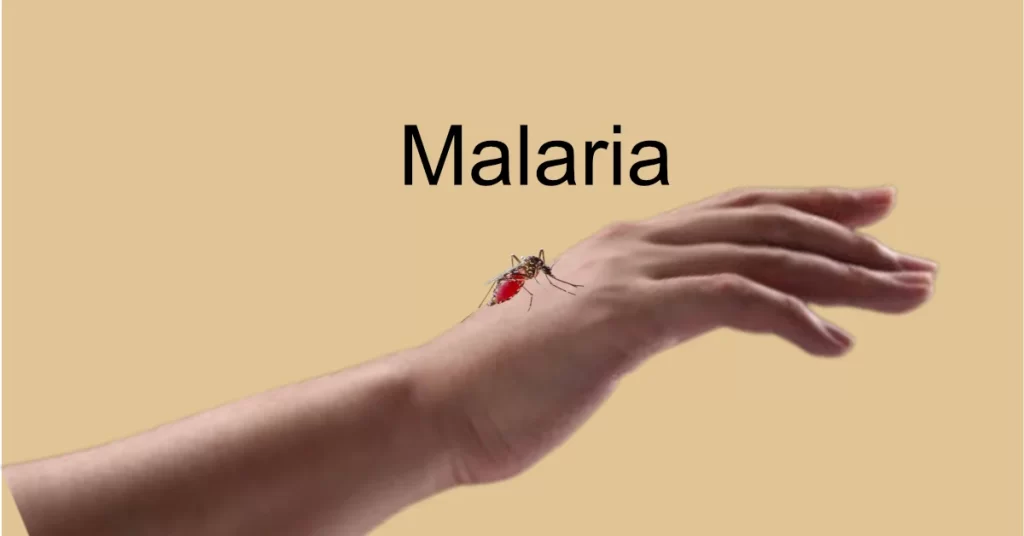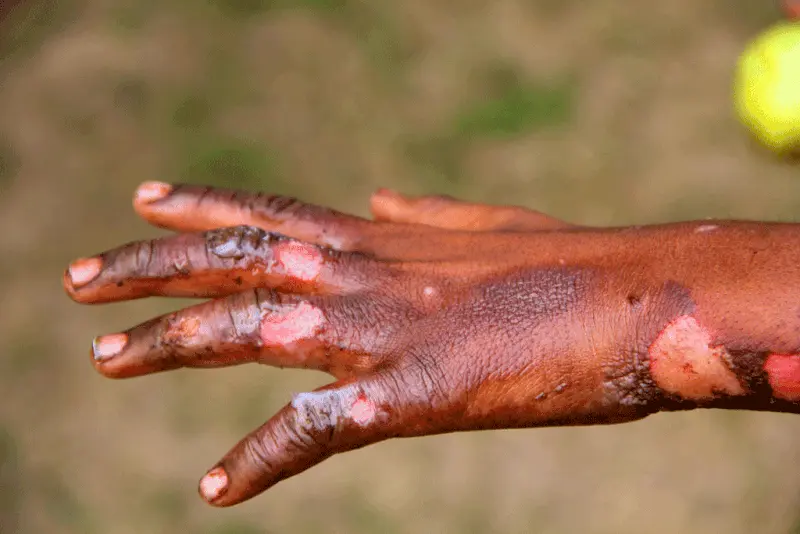Understanding Malaria: Causes, Symptoms and Management

This blog provides a comprehensive overview of malaria, including its causes, transmission, life cycle, clinical manifestation, symptoms, diagnosis, and management. It also discusses the advantages and disadvantages of different blood slides and rapid diagnostic tests, as well as complications and fun facts about malaria.
Introduction: Malaria is a life-threatening disease caused by a single cell eukaryotic parasite of the genus Plasmodium transmitted to humans through the bites of infected female Anopheles mosquitoes. Malaria is a treatable and preventable disease.
- It is prevalent in tropical and subtropical regions of the world, mostly affecting young children, pregnant women, and non-immune travelers. In this blog, we will explore the different aspects of malaria, including its causative agents, epidemiology, transmission, life cycle, pathogenesis, clinical manifestation, classical stages of fever, diagnosis, and management.
Causative Agents: Malaria is caused by five species of Plasmodium parasites, namely Plasmodium falciparum, Plasmodium vivax, Plasmodium malariae, Plasmodium ovale, and Plasmodium knowlesi. Among these, P. falciparum is the most deadly and prevalent in sub-Saharan Africa, causing severe malaria and death in millions of people every year.
Epidemiology: Malaria affects more than 200 million people worldwide, causing over 400,000 deaths every year. It is prevalent in sub-Saharan Africa, Southeast Asia, and the Americas, with 90% of malaria cases and deaths occurring in Africa. Children under the age of five and pregnant women are at the highest risk of contracting malaria.
Transmission: Malaria is transmitted to humans through the bites of infected female Anopheles mosquitoes. Once inside the human host, the parasites multiply and destroy red blood cells, causing anemia, fever, and other symptoms.
Life Cycle: The life cycle of malaria involves two hosts, the mosquito and the human. The mosquito ingests Plasmodium parasites while feeding on an infected human. The parasites then develop inside the mosquito’s gut, migrate to its salivary glands, and infect another human when the mosquito bites again.
Pathogenesis: The pathogenesis of malaria involves the destruction of red blood cells, leading to anemia, fever, and other symptoms. The severity of the disease depends on the species of Plasmodium, the immune status of the host, and other factors.
- Human infection by all 4 Plasmodia sp. occurs by transmission of sporozoites via a bite from an infected anopheles mosquito.
- The sporozoites travel from the salivary glands of the mosquito through the bloodstream of the host to the liver.
- In the liver, they invade hepatocytes and divide many thousand-fold until mature tissue schizonts, each containing thousands of daughter merozoites, are formed.This Exoerythrocytic stage is asymptomatic.
- The liver schizonts rupture after 6 to 30days and release thousands of merozoites into the bloodstream, where they interact with specific erythrocyte membrane proteins and invade red blood cells (the Erythrocytic stage).
- P. falciparum may invade any red cell, while P.vivax and P.ovale prefer the younger, slightly larger reticulocytes.Within red cells, the merozoites mature successively from ring forms to trophozoites to mature red cell schizonts (asexual forms) over 48 (P. vivax, P. ovale, P. falciparum) or 72 (P. malariae) hours.
- Finally, new daughter merozoites are released from the erythrocytes and can infect new red cells.
- A few merozoites differentiate into male or female gametocytes (sexual forms) which cause no symptoms but which can circulate in the bloodstream until they are ingested by a blood-feeding anopheles mosquito.
- These sexual forms complete their life cycle within the mid-gut of the Anopheles mosquito, and the sporozoites that form then migrate to the salivary glands of the mosquito from where they can re-infect humans.
Clinical Manifestation: The clinical manifestation of malaria includes fever, chills, headache, muscle pain, and fatigue. In severe cases, it can cause organ failure, seizures, coma, and death.
Classical Stages of Fever: The classical stages of fever in malaria include the cold stage which takes about 2 hours (sensation of cold and shivering), the hot stage last about 3-4 hours (high fever, headaches, and vomiting), and the sweating stage last 2-4 hours (fever reduction and profuse sweating).
Symptoms: Other symptoms of malaria include anemia, jaundice, respiratory distress, and neurological abnormalities.
Diagnosis: The diagnosis of malaria involves blood tests, such as thick and thin blood smears, antigen detection tests, and molecular tests. Different blood slides have their advantages and disadvantages, and rapid diagnostic tests are also available for quick diagnosis.
- WHO definition of severe P.falciparum malaria includes hyperparasitemia >2% or 100,000parasites/microL in low-intensity transmission areas or >5% or 250,000 parasites/microL in areas of high stable malaria transmission intensity.
- CDC definition of severe malaria includes parasitemia of ≥5%
Note: Parasites frequently sequester in capillaries in the setting of severe malaria, therefore, the peripheral blood smear may reflect a low parasite density relative to the parasite burden.
Advantage and Disadvantage of Different Blood Slides: Thick blood smears provide a higher sensitivity for detecting low parasite density, while thin blood smears allow for better species identification. However, they require experienced microscopists and time-consuming preparation. Antigen detection tests and molecular tests are rapid and sensitive but require specialized equipment and trained personnel.
Rapid Diagnostic Test: Rapid diagnostic tests for malaria are simple, rapid, and affordable, providing results within 15-20 minutes. They are helpful in remote areas with limited resources, but their sensitivity and specificity vary depending on the manufacturer and the type of test.
Severe Malaria: Severe malaria is a medical emergency that requires immediate hospitalization and management. It is usually caused by P. falciparum and can lead to organ failure, coma, and death.
Management: The management of malaria involves antimalarial drugs, such as artemisinin-based combination therapy (ACT), to kill the parasites and relieve symptoms. Prevention measures, such as mosquito nets, insect repellents, and indoor residual spraying, are also crucial to reduce the risk of transmission.
Complications: Complications of malaria include anemia, cerebral malaria, acute respiratory distress syndrome (ARDS), and kidney failure.
Fun Fact About Malaria: Did you know that the name “malaria” comes from the Italian words “mal” (bad) and “aria” (air), referring to the ancient belief that malaria was caused by bad air or miasma?
In conclusion, malaria is a serious and widespread disease that affects millions of people worldwide. Understanding its causes, symptoms, and management is crucial for public health efforts to control and eventually eliminate this disease. By implementing effective prevention and treatment strategies, we can reduce the burden of malaria and save lives






Responses